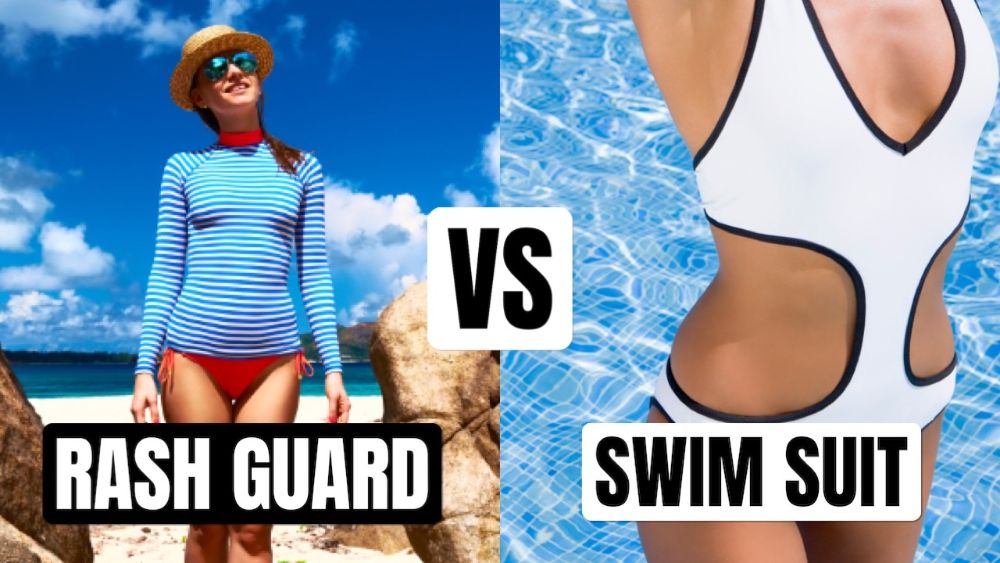
While we all enjoy a fun day down at the beach or the pool it is also important to carefully balance the need to look good against the dangers of too much sun exposure.
The question which often arises whether you should wear a rash guard or a swim suit and which is better to wear?
A rash guard differs from a swimsuit in that they cover more of the torso and often the arms, protecting the body from harsh UV rays as well as stingers. Rash suits soak up a lot of water making it harder to swim. Swimsuits are more aerodynamic and are more fashionable, while rash shirts help with modesty.
In this article we'll look more closely at the differences between rash guards and swimsuits and the benefits of each so you can choose which item will be best for you to wear.
Benefits Of A Rash Guard Over a Swimsuit
A rash guard has a few key benefits over just a swimsuit. In fact, a lot of people wear rash guards over their swimsuits for these very reasons:
Protects Your From UV Rays
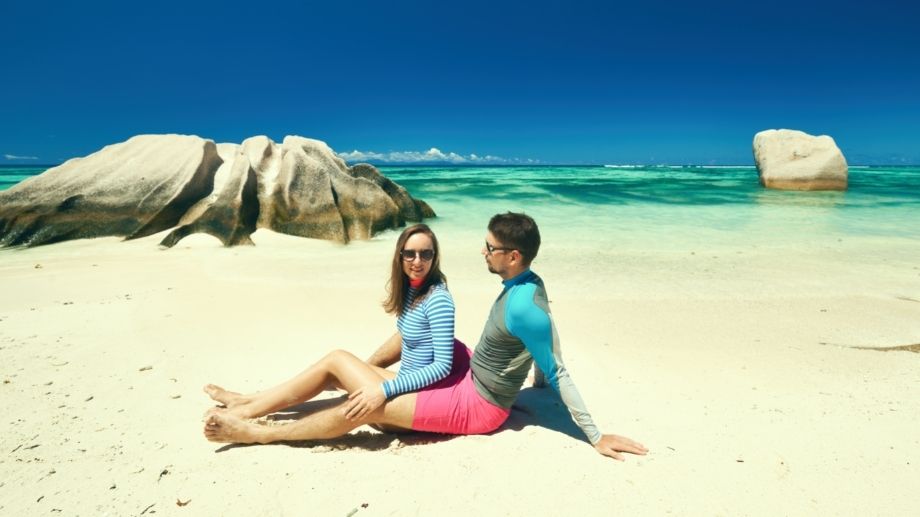
The #1 reason people tend to choose rash guards over swimmers is the increased protection from the sun's harmful UV rays.
Rash guards absorb the UV light stopping it from reaching the skin, thus protecting you from the sun.
This makes rash guards extremely popular with children, who tend to burn more easily than adults.
Rash guards usually come in the form of a short or long sleeve t-shirt which covers the torso, shoulders and in the case of long sleeve rash guards your entire arms as well.
Rash guards also tend to have a high neck when compared to t-shirts which helps stop the chest and back of the neck from getting burned.
Protects Your Skin From Stingers

In some areas jellyfish, blue bottles and other stingers are a real risk to swimmers, divers and surfers.
Rash guards help to keep pesky flies and biting insects at bay and offer protection from stingers in the water.
In some area stingers can be extremely dangerous and their stings can be very painful, but a rash guard will protect the skin from many stingers.
In some areas full length rash suits are worn to cover the entire body including hands, feet and some of these suits even have a hood for the head.
No Need To Reapply Sunscreen

One of the other advantages of covering up with the rash guard for the day at the beach or swimming pool is that it also reduces to need to constantly keep applying sunscreen throughout the day.
As a parent I know how hard it can be to get the kids out of the water, get them dry, apply the sunscreen and then get them to wait 10 minutes of so for it to sink in before letting them back in the water. If they are happy having fun I don't want to spoil it, but this can lead to them getting burned.
Rash guards provide a safe alternative to buying and using sunscreen all over your body. Adequate sunscreen should of course always be worn on the face and exposed areas of the body especially if you are going to be out in the sun for an extended period of time.
But it's a lot easier to reapply sunscreen to just the face than it is to the entire body. Don't forget to apply sun screen to the areas of our body such as your legs which are not covered by a rash guard.
The backs of your hands and the tops of your feet can be very painful if they get sunburned so pay some attention to applying sunscreen to those areas.
It is also a good idea to check what the Ultraviolet index is before heading out for the day. Sun protection is always needed when the UV index reaches 3 and above.
Wide brimmed hats are an excellent idea for wearing at the beach as they help to protect the head, face and ears from the harsh rays of the sun.
More Modesty, Coverage and Comfort

Everyone's body is different and the way we feel about our bodies is also different.
Some people are happy in a bikini while others would prefer to cover up a bit more when at the beach and the pool.
Rash shirts provide a normal and appropriate way to cover up more of your body and be more modest, whilst still being made of lightweight fast drying materials that are made for swimming in.
These days some rash guards can also be helpful in firming and flattening certain parts of the body you may wish to distract attention away from.
Rash guards are also a common sight at beaches and pools so you won't feel out of place like you might if you're wearing a t-shirt in the pool.
Benefits of a Swimsuit over a Rash Guard
While a rash guard will offer you better protection from UV rays when compared to a swimsuit there are a variety of benefits to wearing just a swim suit instead of a rash guard.
Swimsuits Allow You To Get Tanned
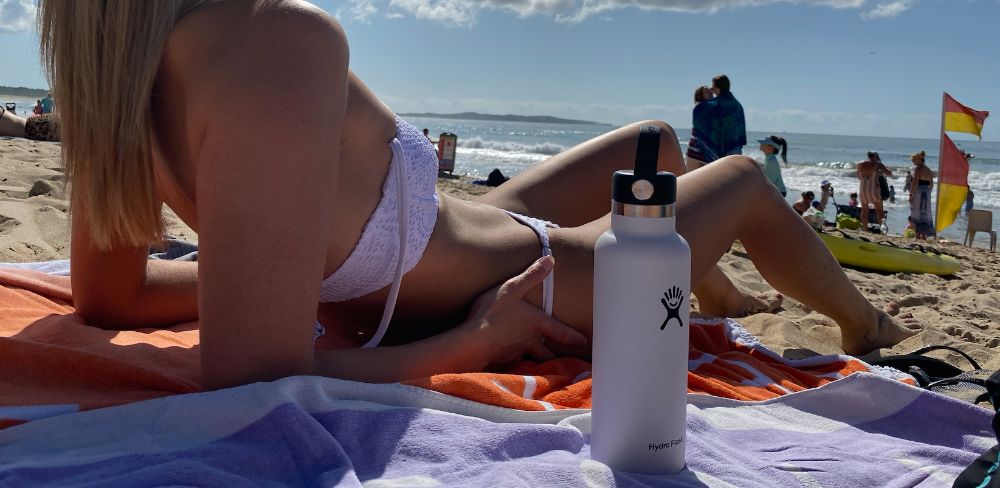
While rash guards protect your skin from the sun they also stop you from getting tanned, and many of us like to get our skin a bit tanned in the spring and summertime.
By wearing a swimsuit you can get that full body tan you've been longing for and sun exposure will also help you produce more vitamin D which is very good for you.
You just need to be careful with managing your sun exposure and avoiding overexposure which can lead to burning and an increased chance of skin cancers.
Swimsuits Can Be Warmer In Windy Weather
You may assume that rash guards will keep you warm given they are long sleeved and cover more of your body. However, on windy days rash suits do not keep you warm.
Rash vests tend to cool you down quite quickly especially if they are wet due to the nature of the material they are made from.
In fact, they can make you colder on windy days due to the wind chill and the fact that they stay wetter than regular swimsuits.
If you really need something to keep you warm (eg. if you're swimming in winter) then a wetsuit is better than a rash guard.
Swimsuits Are Easier To Swim In

Swimsuits are a lot easier to swim in when compared to rash guards because rash guards absorb a lot of water which can weigh you down when trying to swim, making swimming harder.
If you're doing laps or long distance swimming then a swim suit is more aerodynamic in the water and a rash shirt will just weigh you down.
Swimsuits Dry Faster
Because rash guards are larger than swimsuits they absorb more water and then take longer to dry.
One warm sunny days this isn't usually a problem, but when the water or weather is colder staying in a wet rash shirt can be extremely chilly, while a swimsuit will tend to dry much faster.
Many bikinis, swim suits, male trunks and even board shorts are made from quick dry material.
Swimsuits Are Generally Considered More Fashionable
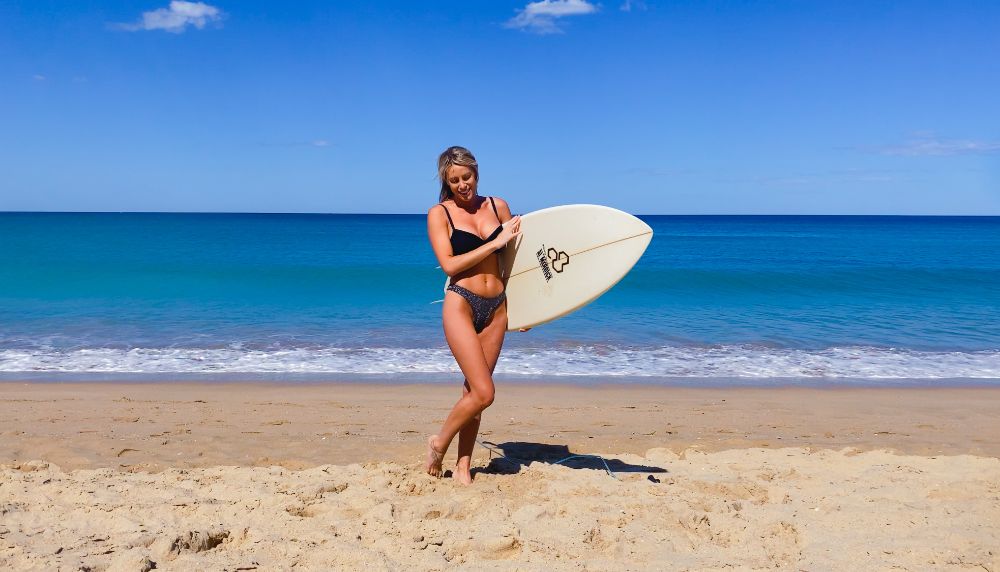
While rash shirts are becoming more fashionable and better fitting generally speaking swimsuits, bikinis, male trunks or board shorts all tend to be more fashionable that rash shirts.
If your goal is to look and feel sexy at the beach sometimes a rash shirt will detract from that and a swimsuit is a better option.
It’s Common To Wear Swimsuits Under Your Rash Guard

Rash guards don't need to be worn in replacement of a swim suit. In fact, it's extremely common for swimmers to be worn under your rash shirt – especially for females.
The majority of people at the beach, swimming pool and watering hole wear swimsuits under their rash guards.
Rash guards naturally cling to your body when wet and can go quite transparent also, showing more than you might want. So wearing a swim suit or swim bra under a rash shirt is usually a good idea.
Is a Rash Guard The Same As a Swimsuit?
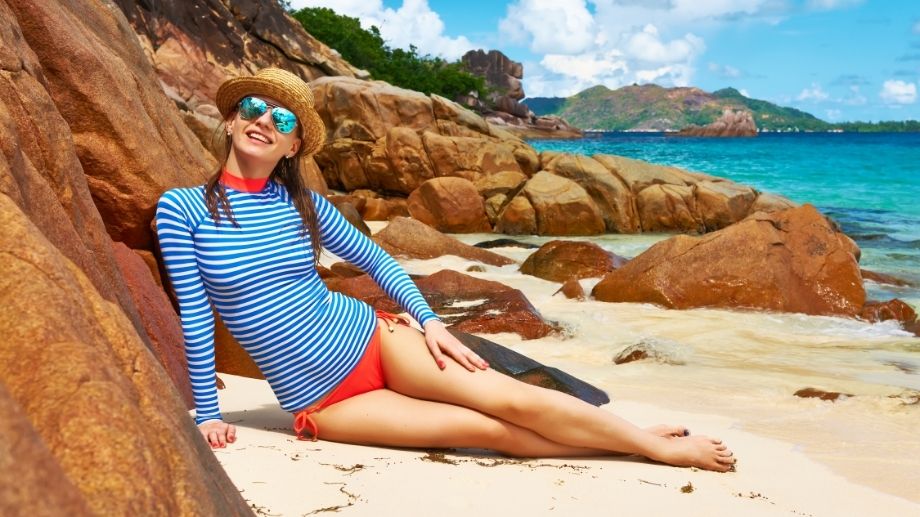
You might be wondering whether or not a rash guard is the same as a swimsuit? It's not
Rash guards are generally not the same as a swim suit. Some rash guards are made as fully body suits and swimmers aren't required however most are a t-shirt designed to go over your swimmers to protect your skin from harmful UV rays.
Swimsuits can either be swimming trucks for men or a bikini or one piece costume for women are generally more revealing.
Is It Weird To Wear a Rashguard To The Beach?

If you're heading to the beach you might be wondering whether or not it's normal to wear a rash guard at the beach or if you'll be out of place wearing one there.
It is extremely normal and common to wear a rash guard to the beach. On the majority of beaches and around pools you'll see many children and men and women wearing rash guards to protect their skin from harmful UV rays. Rash guards are growing in popularity and becoming more and more common.
Some families even choose to attend the beach or the local swimming hole wearing matching rash guards. This idea makes it easier to spot Mum and Dad on the beach and helps identify your kids in the water and crowds.
Do Surfers Wear Rash Guards?
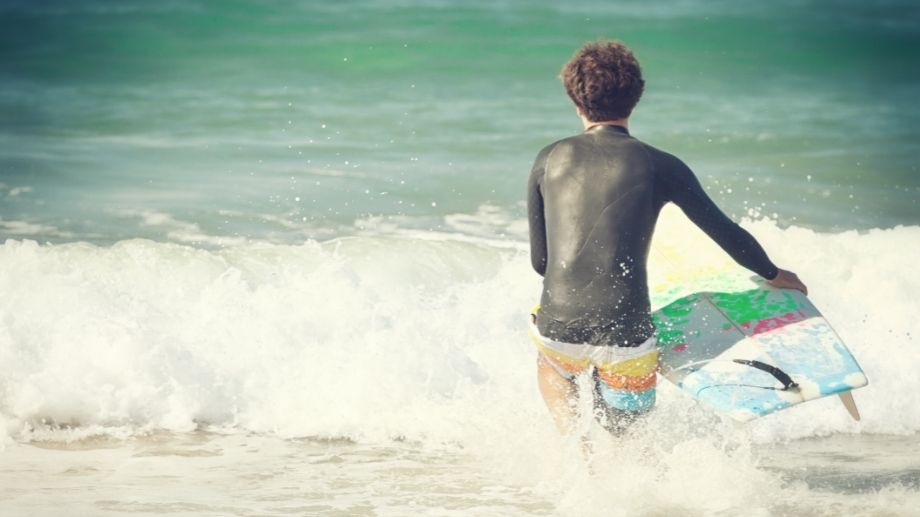
You may know that surfers wear wetsuits to keep themselves warm while catching waves, but do surfers ever wear rash guards?
Surfers can often be seen wearing rash guards in warmer weather as a way to protect their skin from harmful UV rays, especially during long summer sessions. Surf brand manufacturers make and sell their own rash guards that are popular. In colder water wetsuits are a better option.
During surfing competitions surfers will wear colored rash guards or vest overs their wetsuit to more easily distinguish different riders so they judges know who to assign what points to.
Wearing a rash guard under a wetsuit is rare as they bunch up and soak up water making it harder to swim or paddle. Regular rash guards won't keep you warm under your wetsuit.
Insulated rash guards however, which are usually made from neoprene, can be worn under your wetsuit as a way to keep warmer.



